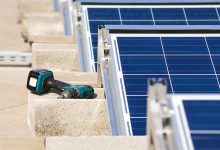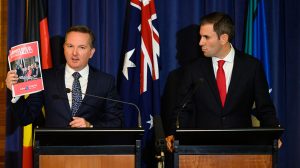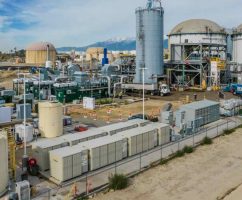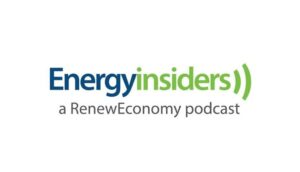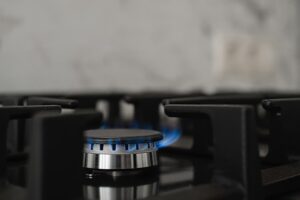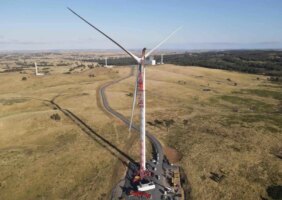The NSW government has unveiled a $32 billion investment plan for new electricity infrastructure in the state, that will see strong investment in new wind, solar and storage projects to replace the state’s ageing coal fleet while reducing emissions and costs for NSW consumers.
Under the Electricity Infrastructure Roadmap launched by energy minister Matt Kean, and deputy premier John Barilaro on Monday, the NSW government – home to the country’s biggest grid – will target $32 billion of new private investment in electricity infrastructure by 2030, including the development of renewable energy zones and energy storage projects.
NSW aims for 12 gigawatts of new renewable energy capacity – over and above “business as usual” – with an additional 2 gigawatts of storage capacity by 2030. It will be supported by an Electricity Infrastructure Investment Safeguard that will offer long term energy services agreements through a tender for generation, long duration storage and firming.
Under the long term energy services agreements, the NSW government will offer an electricity price floor to projects being developed in line with the government’s infrastructure strategy, ensuring the right investment signals are being sent to the market to build the right projects in the right places, while also working to reduce the risk and cost of finance for the projects. They effectively work as a PPA.
It is a hugely significant development, given that NSW is the biggest grid in the country, and has so far not undertaken the sort of reverse auctions and tenders common in other states. And it has a Coalition government trying to manage the anticipated exit of most of its coal fleet in the next decade or two.
“NSW has some of the best natural resources in the world and this Roadmap is about acting now to leverage our competitive advantage and to position NSW as an energy superpower,” Kean said in a prepared statement.
And it seems that the program has the support from the Liberal government’s right wing, and the Nationals, as well as the Opposition Labor. It was launched by Kean and Barilaro at an event at the Dubbo solar farm operated by Neoen.
An additional $50 million in grants are set to be allocated in the forthcoming budget to support the development of new pumped hydro energy storage projects, through an extension of the existing Emerging Energy Program.
The plan is expected to reduce emissions from NSW’s electricity sector by around half, compared to a business-as-usual trajectory, with an equivalent reduction of around 90 million tonnes of carbon dioxide emissions annually by 2030, and turn NSW into one of the lowest cost regions in the developed world.

The plan has been unveiled ahead of a forthcoming state budget, which will detail the next phase of the NSW government’s economic response to the current recession. The Electricity Infrastructure Roadmap is expected to support the creation of 6,300 new construction jobs, and as many as 2,800 ongoing jobs, mostly located in regional NSW by 2030.
The state government believes the flow-on benefits of clean energy investments will be felt across the wider economy, with a net gain of 23,600 jobs expected for the period between 2032 to 2037.
In addition to major economic stimulus, NSW energy minister Matt Kean says the plan will lead to lower electricity prices for NSW households, with the significant investment in wind and solar helping the state to switch to cheaper supplies of electricity as coal generators retire.
Modelling undertaken by the NSW government suggests that the plan would reduce retail electricity prices by an estimated 8 per cent, compared to a scenario where no action is taken and would save around $12.4 billion in energy system costs.
“Our priority is to keep the lights on and get power prices down, with the Roadmap forecast to save NSW households an average of $130 and small businesses an average of $430 on their electricity bills each year,” Mr Kean said.
“NSW has some of the best natural resources in the world and this Roadmap is about acting now to leverage our competitive advantage and to position NSW as an energy superpower.”
The Electricity Infrastructure Roadmap is expected to deliver a big boost for farmers with contractual arrangements between farmers and the developers of solar, wind and storage projects set to deliver $1.5 billion in land access payments by 2042.
“The stimulus the Renewable Energy Zones will provide to regional communities will unlock over 9,000 new jobs and will be a huge boost to farmers and land owners, with $1.5 billion in lease payments expected to go to landholders hosting new infrastructure by 2042,” NSW deputy premier John Barilaro said.
“The Roadmap will make sure that renewables are developed where regional communities want them and where they are compatible with farming.”
The Electricity Infrastructure Roadmap follows the release of a Transmission Infrastructure Strategy by the NSW government, which pointed to the need for three new renewable energy zones to be established across the state, including developments in the Central-West, New England and South West regions of the state.
The roadmap has been welcomed by environmental groups and energy investors alike, saying it represented an ambitious commitment to investing in clean energy as ageing coal power stations exit the system.
“This Roadmap is a welcome plan for private sector investors, harnessing the power of private markets to accelerate NSW’s renewable energy goals – all through providing policy certainty and distinct market signals,” Clean Energy Investment Group chair Simon Corbell said.
“This focus on reducing the cost of capital for new renewable energy projects, enabled by long term contractual support, is key to enabling investors to deliver the low cost capital required to help NSW achieve the clean energy transition in a cost efficient way which also protects consumers.”
Australian Conservation Foundation climate change program manager Gavan McFadzean said that a crucial aspect of the plan was that it had secured bipartisan support across the NSW parliament, with the Liberal, National and Labor parties all backing the plan.
“It is great to see bi-partisan support for NSW to become a clean energy superpower,” McFadzean said. “By setting a clear, long-term plan the state is setting in train an orderly transition that will protect communities and workers.”
“The federal government could learn from this roadmap – the future is in clean energy, not dirty, polluting fuels like gas.”

